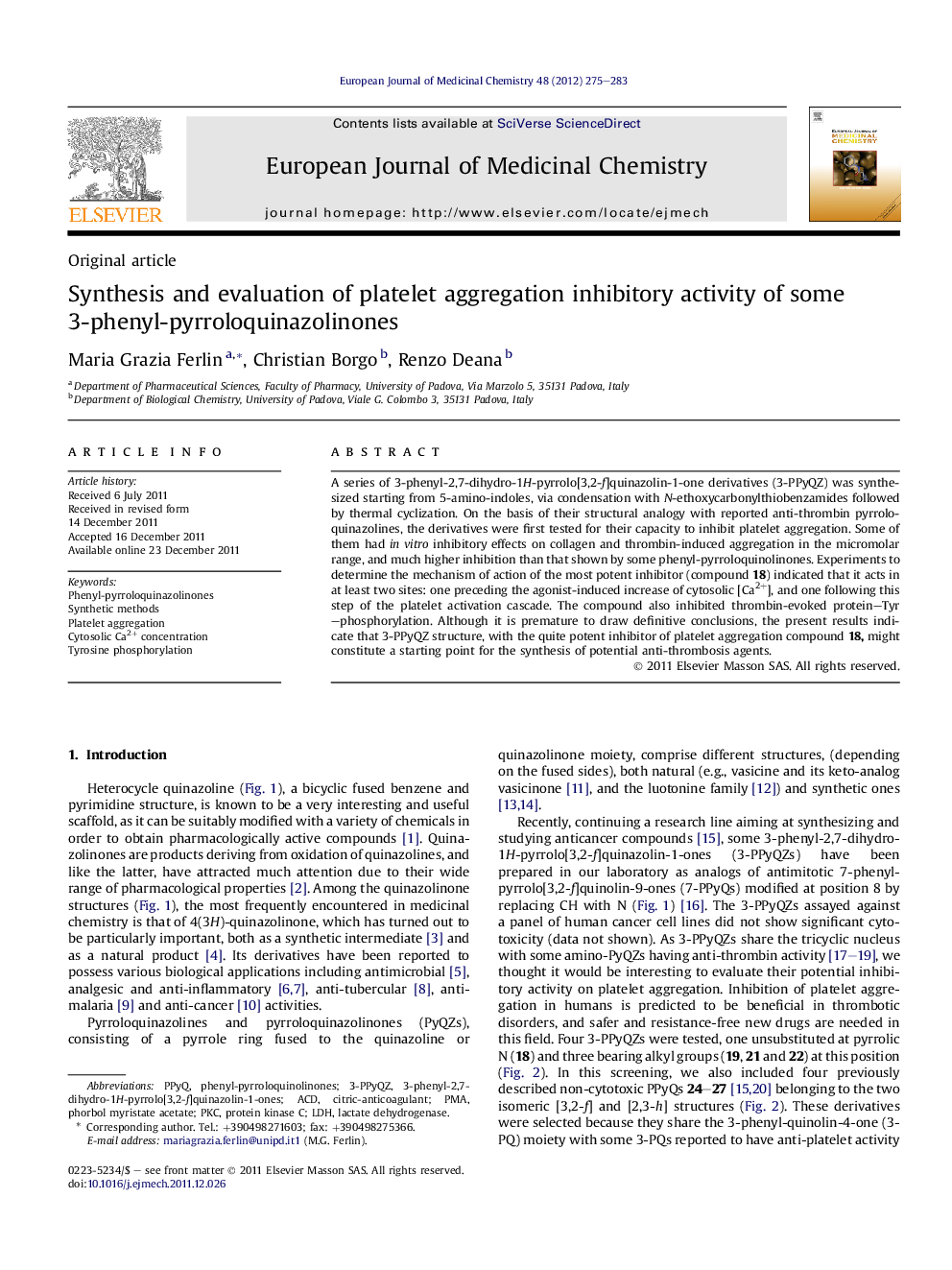| Article ID | Journal | Published Year | Pages | File Type |
|---|---|---|---|---|
| 1397467 | European Journal of Medicinal Chemistry | 2012 | 9 Pages |
A series of 3-phenyl-2,7-dihydro-1H-pyrrolo[3,2-f]quinazolin-1-one derivatives (3-PPyQZ) was synthesized starting from 5-amino-indoles, via condensation with N-ethoxycarbonylthiobenzamides followed by thermal cyclization. On the basis of their structural analogy with reported anti-thrombin pyrroloquinazolines, the derivatives were first tested for their capacity to inhibit platelet aggregation. Some of them had in vitro inhibitory effects on collagen and thrombin-induced aggregation in the micromolar range, and much higher inhibition than that shown by some phenyl-pyrroloquinolinones. Experiments to determine the mechanism of action of the most potent inhibitor (compound 18) indicated that it acts in at least two sites: one preceding the agonist-induced increase of cytosolic [Ca2+], and one following this step of the platelet activation cascade. The compound also inhibited thrombin-evoked protein–Tyr–phosphorylation. Although it is premature to draw definitive conclusions, the present results indicate that 3-PPyQZ structure, with the quite potent inhibitor of platelet aggregation compound 18, might constitute a starting point for the synthesis of potential anti-thrombosis agents.
Graphical abstractThe present results indicate that 3-PPyQZ strcture, with the quite potent inhibitor of platelet aggregation compound 18 acting by an interesting mixed action-mechanism, might constitute a starting point for the synthesis of potential anti-thrombosis agents.Figure optionsDownload full-size imageDownload as PowerPoint slideHighlights► A series of phenyl-pyrroloquinazolinone derivatives were synthesized. ► Some inhibited, in the micromolar range, the in vitro aggregation of human platelets. ► The compound 18 reduced the thrombin-induced cytosolic Ca2+ concentration increase. ► It also reduced the thrombin-induced protein–Tyr–phosphorylation in platelets. ► Compound 18 might constitute a starting point for the synthesis of new anti-thrombosis agents.
